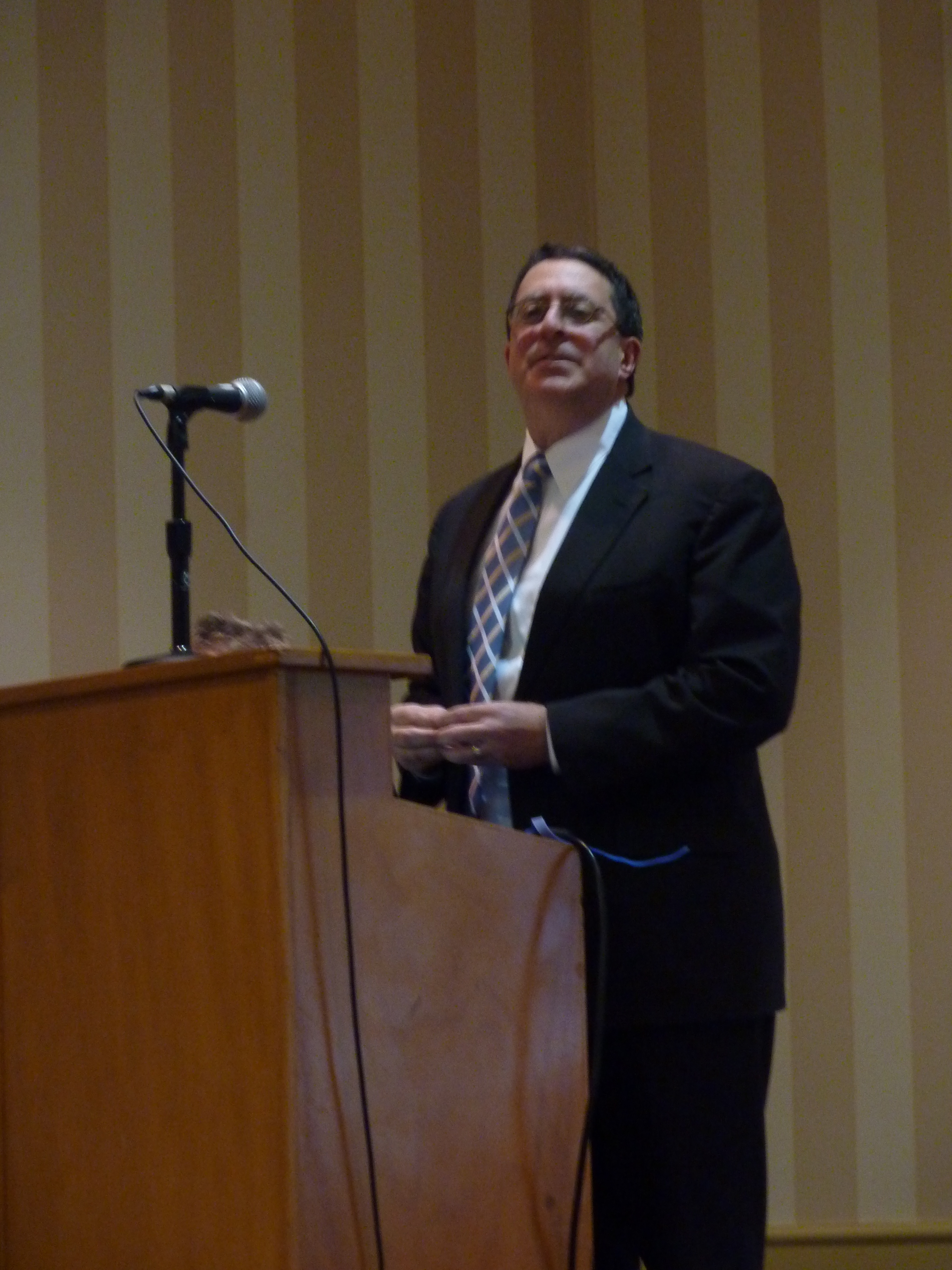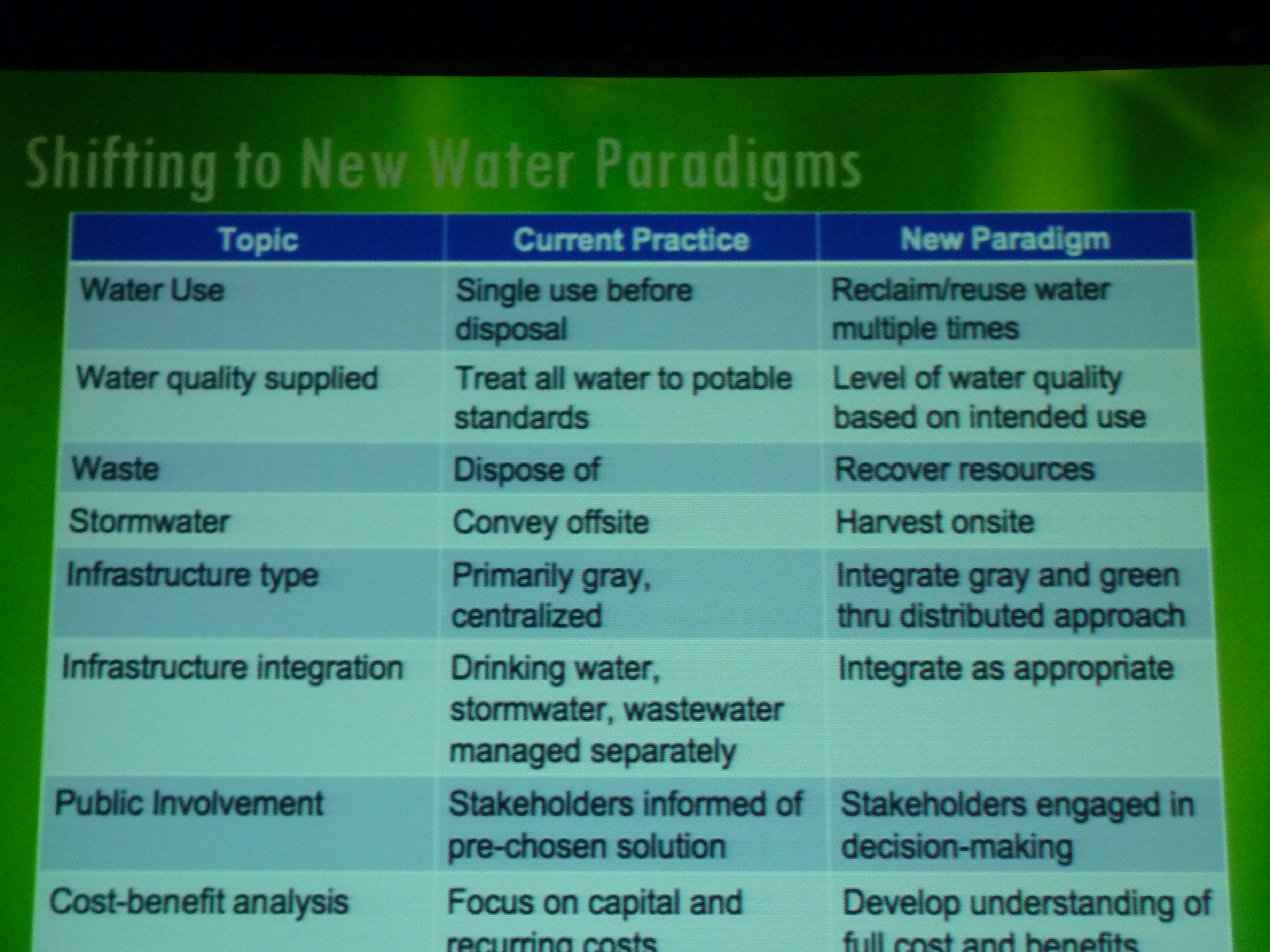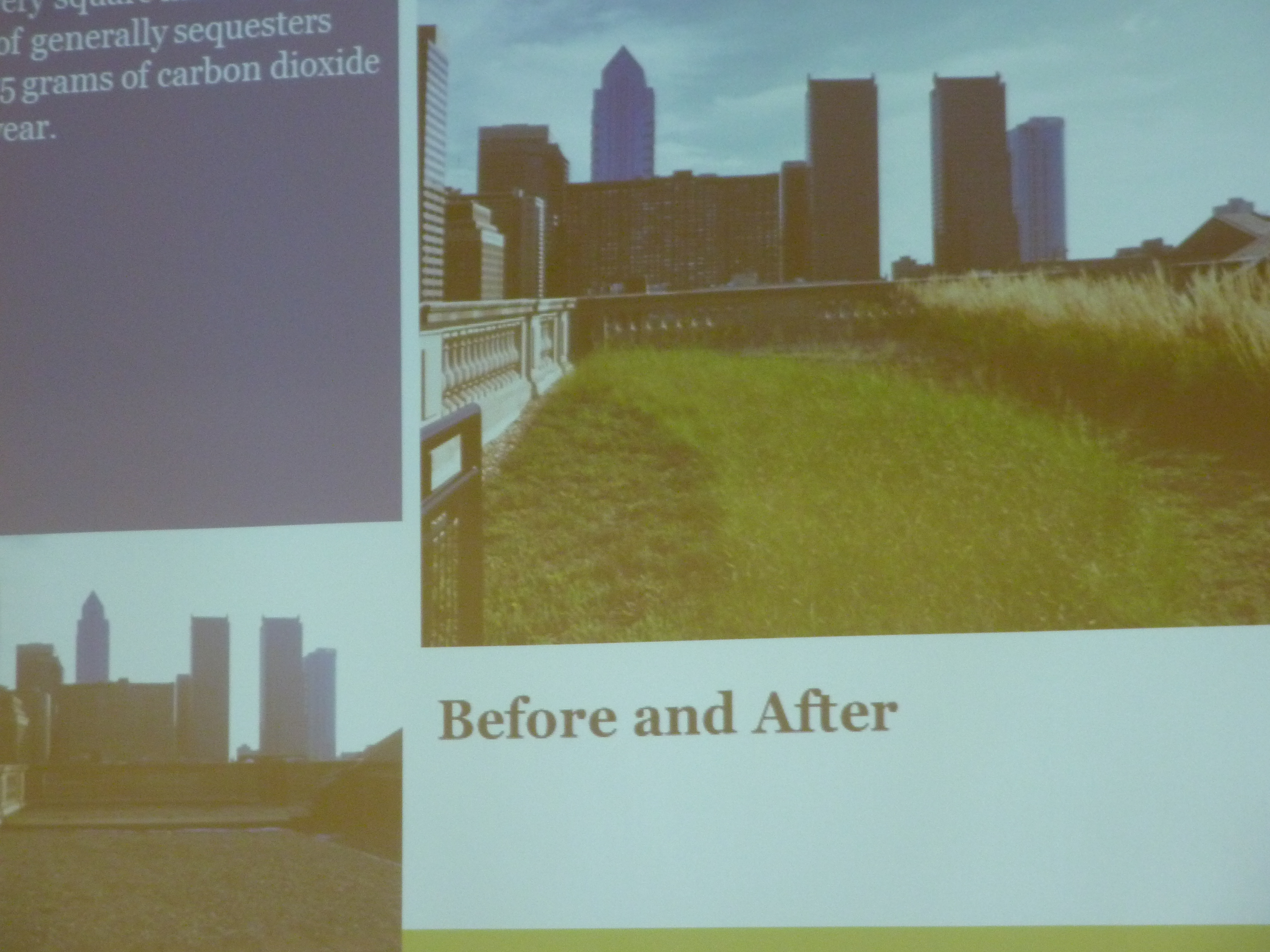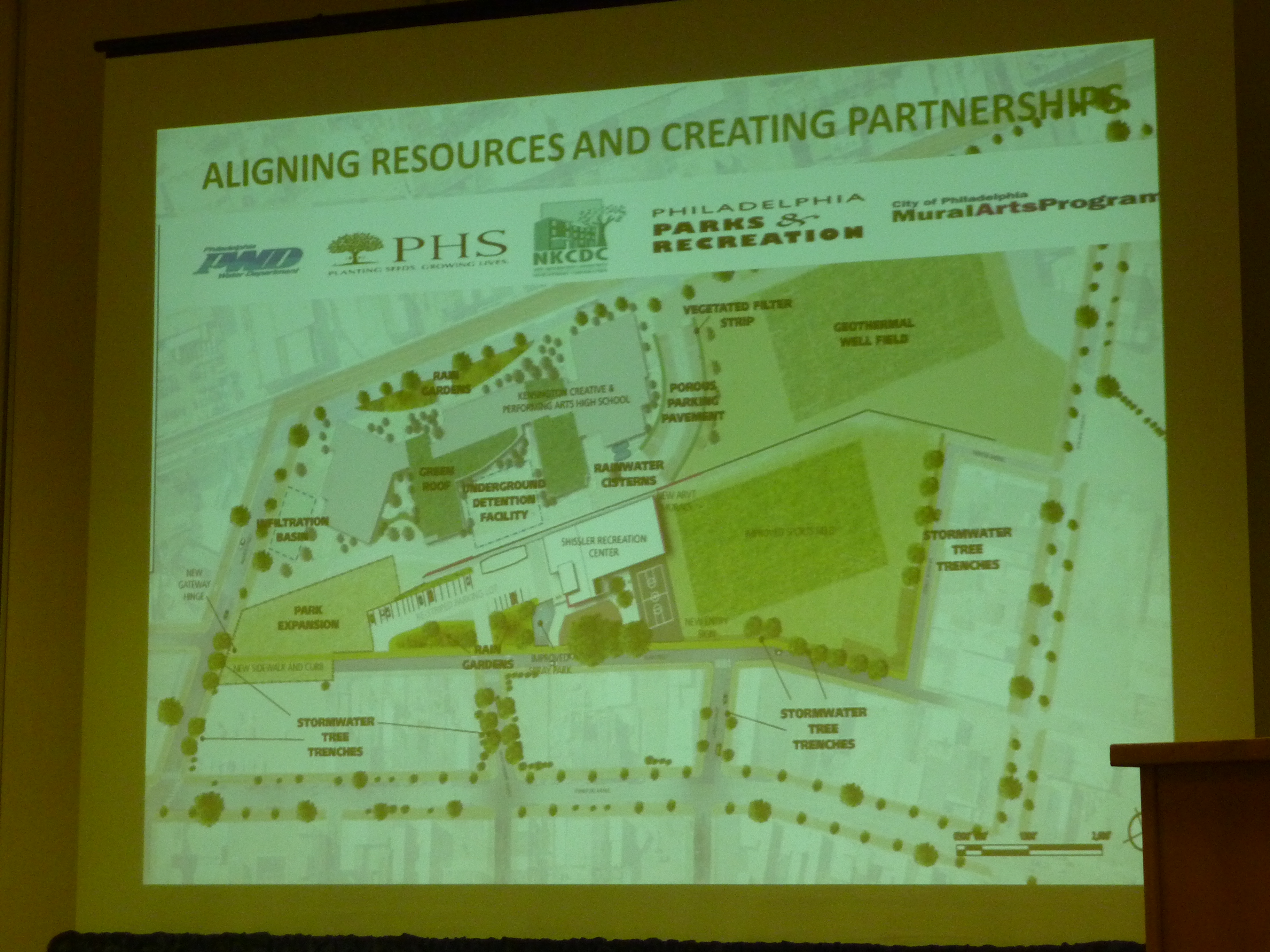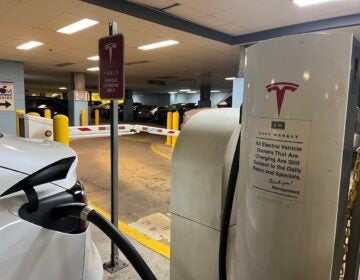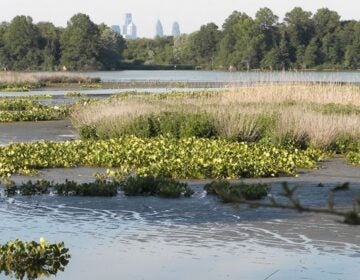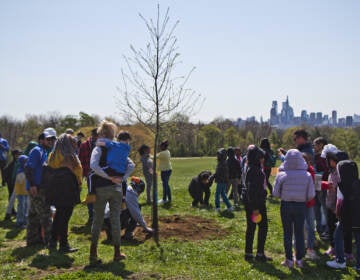Philadelphia shines at Cities Alive, the annual conference of Green Roofs for Healthy Cities
Some 700 officials from cities across the U.S. are in town to attend the 9th Annual Cities Alive, presented by the Toronto-based Green Roofs for Healthy Cities (GRHC), and co-hosted by the City of Philadelphia and the Pennsylvania Horticultural Society.
Over the next few days, they’ll assemble at the Sheraton Philadelphia to learn about the latest products of, and share best practices in, the green roof and wall industry.
At last night’s opening plenary, Philadelphia Water Department Commissioner Howard Neukrug — who, it was announced, is the recipient of this year’s GRHC award for civic excellence — offered an overview of the city’s efforts to satisfy federally-mandated regulations governing the mitigation of stormwater runoff in combined sewer overflow (CSO) systems.
He began by mentioning that for its efforts, Philadelphia was last month honored as the only city to meet all six “Emerald City” criteria in working toward these goals by the Natural Resources Defense Council.
After briefing those in the audience on our long history in managing public water supplies, Neukrug went on to explore what he termed “new water paradigms,” such as shifting from treating all water so it reaches potable standards to basing the level of water quality on different uses. He then outlined the basic premises of Green City, Clean Waters, the department’s 25-year plan, which was announced this summer. Among the goals, he said, are turning about a third of the city’s impermeable surfaces into “greened acres” and increasing stormwater capture to 85 percent. He ended his presentation by offering an inspiring conceptualization by Wallace Roberts & Todd of a green roof-covered city, from office buildings to Interstate 676.
As Neukrug concluded, Steven Peck, founder and president of GRHC, suggested “water is the oil of the 21st-century” (he’s probably said it a thousand times, but we thought it a good sound bite!).
Next up, Kevin Kampschroer of the Government Services Administration (GSA) embarked on a tour of the greening efforts now underway in federally-owned buildings, including two in Philadelphia. At the Veteran’s Administration Building, 5000 Wissahickon Ave., a solar roof has been installed, while the Byrne Green Building, 7th and Market, now sports a green roof.
Drew Becher, PHS president, finished the evening with a brief pitch on all that the Society has accomplished — including planting 118,000 trees since last year, en route to its goal of 1 million — and encouraged everyone to go forth and enjoy the city from beer to pier (Race St. Pier Park).
This morning, the conference opened with a presentation titled “Emerging Green Transformation of Philadelphia — from Plans to Projects, Investing in Green Infrastructure to Transform a City.”
Three city officials stepped up to the podium to present a thorough overview of Philly’s various green initiatives. First, Alex Dews of the Mayor’s Office of Sustainability, ran though Greenworks, the 2009, 100-page document that offers a multi-pronged appproach to sustainability, with five broad goals (energy, environment, equity, economy, and engagement) set for 2015. The six-year timeframe is much more rapid than that of other cities, said Dews, adding that it “has served us well because we need to create a sense of urgency” and, he continued, it increases accoountability since the administration will still be in place in 2015.
Dews next placed Greenworks in the overall planning contest of a new Zoning Code and Comprehensive plan, and green programs from PWD (Green City, Clean Waters) and the Parks and Recreation Department (Green 2015). When an audience member pressed for anything that was specifically innovative, Dews demurred, saying that a mid-point report issued next summer will push further for those kinds of programs, now that buy-in has been established. But, he cautioned, budget constraints can make innovating difficult. (One might argue that they can also foster out-of-the-box thinking.)
Fredda Lippes, also of the Sustainability Office, next presented a look at green roofs on city-owned buildings, including the central branch of the Free Library, where a 6 percent reduction in energy use has been realized. This is so far the city’s only up and running green roof, she said; two more are on the way, at Engine 38, an under-construction fire station in Tacony, and at a new building which will be erected in Pleasant Playground in Mt. Airy.
The final speaker was Marc Cammaratta of PWD, who spoke of how the city was taking a “regulatory hammer and turning it into a positive.” Philadelphia is the only large city approaching CSO regulations by investing in green initiatives rather than heavy infrastructure. Not that these are cheap — the department has allotted $1.67 billion on green stormwater initiatives, $345 million toward wet weather treatment plant upgrades, and $420 million for flexible (“adaptive management”) funding, he said.
Noting that today marks the first of several deliverable deadlines to the Pennsylvania Department of Environmental Protection — for an overall implementation plan — Cammaratta mentioned some of the same 25-year targets as had Neukrug, including the goal of greening about a third of CSO acreage. The idea is to start with publicly-owned space, he added, such as parks and rec centers, streets, and public facilities. So far, six newly greened acres have been completed, with 44 in progress and another 30 in the design stage.
He ended his address with a similar graphic to that offered by Dews, showing how so many planning initiatives have been recently completed or are underway. “The timing just could not be better,” he said. His final slide showed an image of what’s being termed the Big Green Block, around Kensington High School for the Creative and Performing Arts and Shissler Rec Center.
That project, which utilizes just about every greening strategy currently out there, will be included as part of a Saturday tour, The City of Neighborhoods. The conference continues on Friday, with panels offering looks at various projects in San Francisco, Seattle, Chicago, and Toronto, as well as a detailed case study on the PECO green roof (from 10:30 – noon). For more information, click here.
Contact the reporter at jgreco@planphilly.com and follow her on Twitter @joanngreco
WHYY is your source for fact-based, in-depth journalism and information. As a nonprofit organization, we rely on financial support from readers like you. Please give today.



